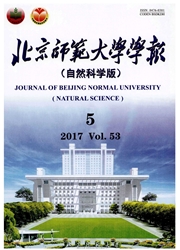

 中文摘要:
中文摘要:
根据2012年浑太河流域65个采样点的底栖动物数据(10个参照点,55个观察点),对33个生物参数进行分布范围、判别能力和Spearman相关性分析,确定了EPT分类单元数、优势分类单元个体相对丰度、耐污类群分类单元数、敏感类群相对丰度、香浓威纳多样性指数构成B-IBI指标体系,采用比值法统一各生物参数量纲.将各个生物参数分值加和得到B-IBI指数值.利用构建的B-IBI开展浑太河流域河流健康状况评价,结果显示,所有样点中健康的占29.23%、亚健康的占12.31%、一般的占20%、较差的占26.15%、极差的占12.31%.相比于太子河流域,浑河流域的健康状况明显较差.小汤河上游、太子河南支、太子河北支所有样点的评价结果均为“健康”,这些区域河流的健康状况在全流域是最佳的.浑河流域从大伙房水库往下游的点位的健康状况大多为较差和极差,这个区域健康状况也是全流域最差的.
 英文摘要:
英文摘要:
In this study, benthic macroinvertebrates were sampled and collected from 65 stream sites in the Huntai River basin in 2012, among which 10 sites were considered as reference sites and 55 test sites. Thirteen candidate metrics were selected to establish of the B-IBI system. Analysis on index value distribution, discrimination ability, and Spearman correlation were then performed on these candidate metrics. Then, five biological metrics, e. g. , EPT taxa, dominant taxa individual relative abundance, tolerant taxa, intolerant taxa individual relative abundance, Shannon-wiener index, B-IBI were obtained by summing up these five indices after they were transformed to a uniform score by using the ratio scoring method. The results showed that 29.23% of sampling sites were in "excellent" condition, 12.31% of sampling sites were in "good" condition, 20~ of sampling sites were in "normal" condition, 26.15% of sampling sites were in "poor" condition, and 12.31% of sampling sites were in "very poor" condition. and the south reach, north reach of the Tai River are in The condition in upper reaches of the Xiaotang River, "excellent" condition. The condition in mostly reaches of agriculture regions in Tai River basin are "poor" or "very poor". The reaches in the source area of the Hun River basin is mostly in "normal" and "poor" condition. The condition is "very poor" and "poor" for the reaches from the Dahuofang reservoir to the estuary of the Hun River basin. As a whole, the river condition is better in Tai River basin than Hun River basin.
 同期刊论文项目
同期刊论文项目
 同项目期刊论文
同项目期刊论文
 期刊信息
期刊信息
